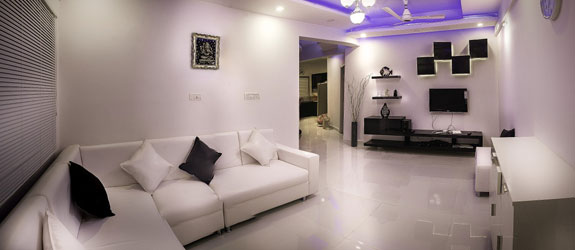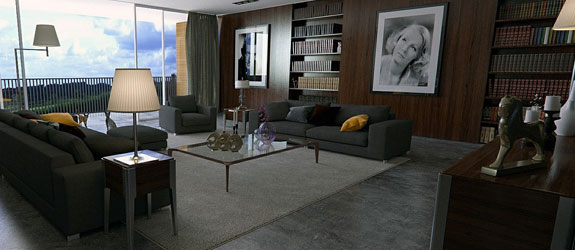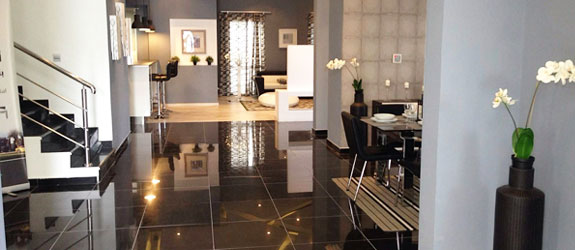You might not realise it, but your home and Flinders st Station have more in common than you might think: they both put up with an impressive amount of foot traffic.
Don’t think so? Think about your own daily routine. During the course of the day, you move swiftly between the bedroom, kitchen, bathroom and lounge room, and while you move, so does your family. With your children and their friends running from room to room, it might seem as if you can’t turn a corner without fearing that you’ll bump into someone on the way to the bathroom or kitchen.
Our homes get busy, especially on holidays and celebrations, so it is essential that your furniture layout accommodate foot traffic, no matter the volume or size of the home. To help you out, here are four great ways to accommodate foot traffic in your home.
Establish a walking path
Every home needs an obvious and easily-followed walking path, and you shouldn’t need trail markers to show houseguests the way. There needs to be a clear path through your furniture and around your cabinets and lighting fixtures that will lead any guest from your front door, through all your rooms and out to the garage, back patio or both.
Now it’s your job to establish this path. Track your moving patterns from one room to the other. Are you stepping over furniture to make the path shorter or taking a longer route to avoid a particularly congested area? Take note of these routes as you go because you will eventually clear out the furniture or rearrange it to make it more accessible.
If you have a spouse or children living with you, ask them to map a similar route. How do they move around the house? Is there enough room in the kitchen for everyone to sit at the table to do homework? Does your spouse trip over the same lamp cord in the lounge room every day? Noticing where the problems exist will help you find better solutions.

Limit furniture
Now look once more at the walking paths you and your family mapped out and think about how your furniture encumbers their movements. Are there too many couches or chairs in your lounge room? Is that one chair by the front door really helping or are people just tripping over it?
Go through each room and consider getting rid of some of your furniture or downsizing what you already have. In the lounge room, for example, you might have too many chairs that are taking up space or you might have a couch and loveseat, but not one ever uses the loveseat. While it’s nice to have a whole furniture set, if you’re not using your furniture, it’s just taking up space.
In your kitchen, consider using a smaller dining room table or storing the bar stools you only use if you have company away in a closet. If you’ve purchased extra china cabinets or wine racks, consolidate what you have into one extra piece of furniture. To make more room in your cabinets, try installing a hanging pot rack in your kitchen so you no longer have to store your pots in cabinets or anywhere else in your kitchen.
Bathrooms are usually very tiny, and they can be made even tinier with additional furniture. If your bathroom does not already have cabinets under the sink or behind the mirror, install these so your family members can store their belongings in the bathroom. Use plastic sliding bins to help them keep organised.
Adult bedrooms should contain a bed, a dress, an end table or two and possibly a desk if you do not already have an office. Anything more will make the room feel crowded.
Don’t forget to remove unnecessary decorations as well. Potted plants, for example, look nice, but if you’re tripping over them all the time, they’re doing more harm than good. Do the same with other decorations and cabinets that are only half used.
Area rugs go under furniture
If many of the rooms in your home are hardwood and not carpeted, then you probably use area rugs to give your family something comfy to sit or lay on, especially when they’re playing video games on the lounge room floor.
These gorgeous rugs, however, can be a major tripped hazard, especially if little to no furniture is on them to keep the ends pinned down. Put your largest pieces of furniture on the rug to keep it pushed to the ground. Try to arrange any chairs on the corners of the rug, as they is usually where people trip on upturned rugs.
In your dining room, place your table at the center of the rug. This may cover up part of the design, but it will give diners a nice place to rest their feet, rather than on the cold floor.
For bathrooms, kitchens and entryways, use the small rugs meant for tiled and wooden floors. Make sure these rugs have a somewhat sticky backing so they won’t move as easily. These rugs will keep your family members’ feet warm, and they won’t be a nuisance.

Use overhead lights
Lighting is important in any household, but lamps, both sitting and standing, tend to take up more room than you might realise. Their cords are also a major tripping hazard, and if you have younger children who might not be watching where they’re going, you might have to take a surprise trip to the dentist to repair a cracked tooth after someone trips and falls.
To solve this problem, take out the standing lights in your rooms and install overhead lights. Pull back the curtains or pin them in your rooms to allow more light in. Your family will be less likely to use your lights during the daytime will all the natural light, and your home will feel less cluttered now that all the cords and light stands are gone.
How much easier will your life be when you can easily move not only from room to room but within a room without hassle? How great will it be when your rooms feel open and airy instead of cluttered and cramped with useless furniture? By making your home more accommodating to foot traffic, you’ll see how much smoother your family moves and notice how much easier it is to get around your house. Try out these tips and give your home a fresh update.



Fiona Wilson helps people all over Australia to better organise their homes and lives. Working closely with Wardrobe World and GarageSmart, she is incredibly passionate about finding practical lifestyle solutions for her clients.